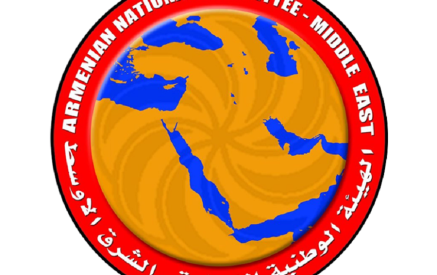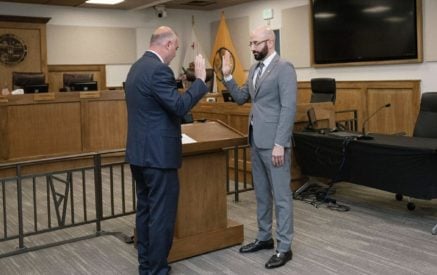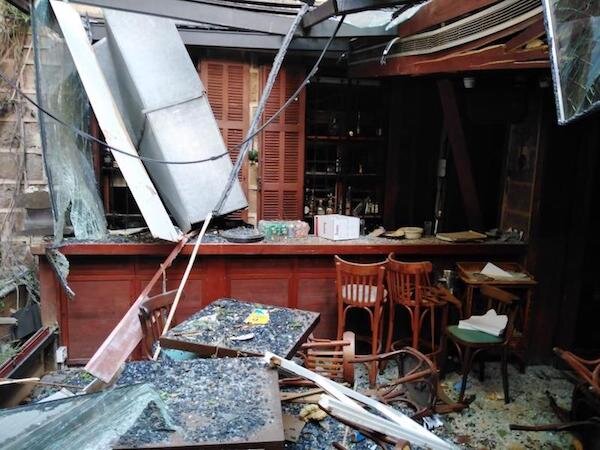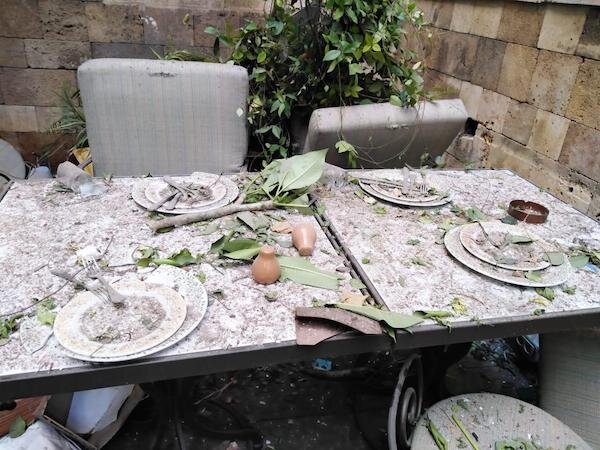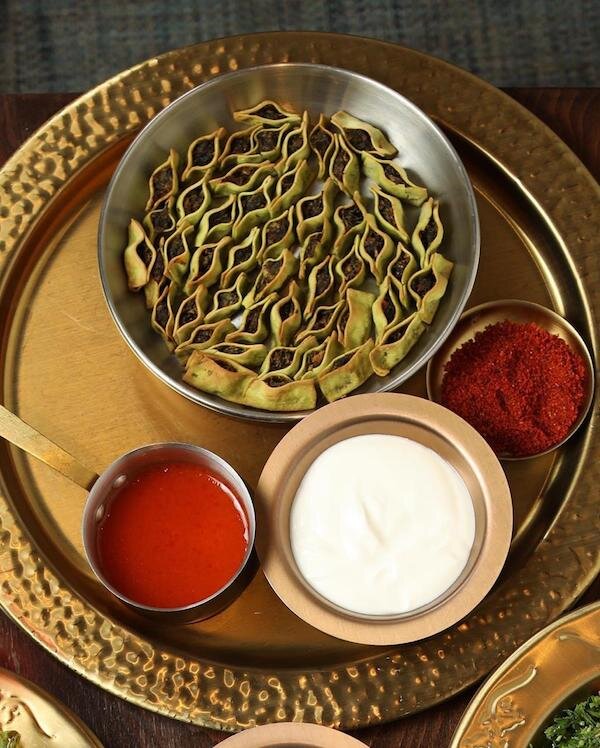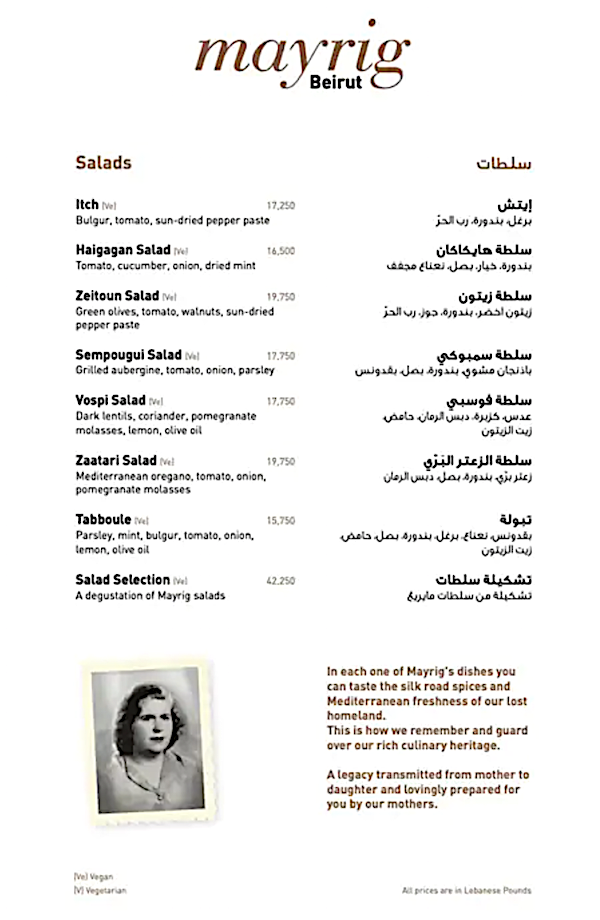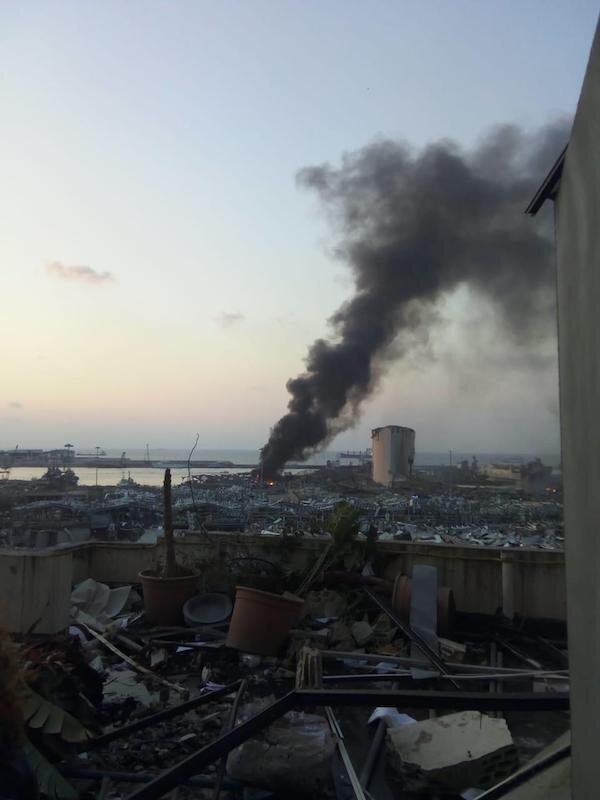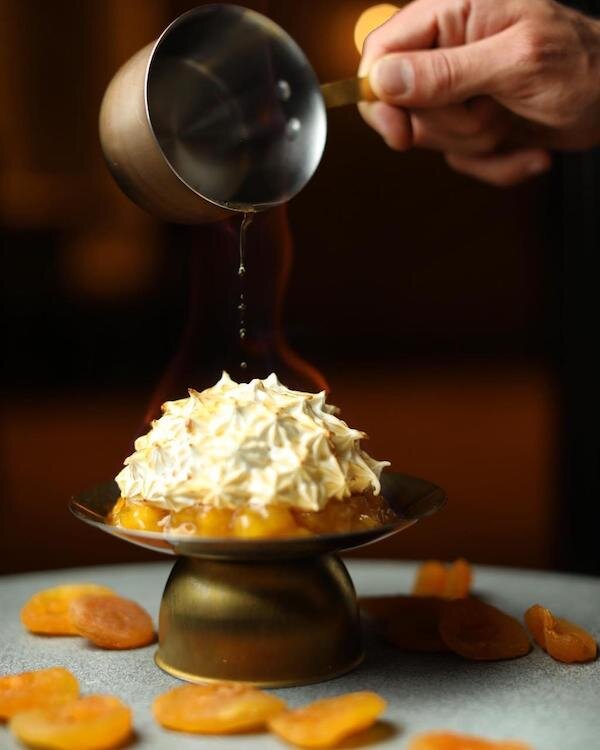Dining In Diaspora. When 2,700 tons of ammonium nitrate tore through Beirut, only a highway separated the city’s port where the explosives were stored from 282 Pasteur Street.
This is where Mayrig, the famed Armenian restaurant known as much for its delectable sour cherry kebab as preserving Armenian culture in one of the diaspora’s strongholds, has stood since 2003.
Located in Beirut’s lively Gemmayzeh neighborhood in a building from when Lebanon was under Ottoman rule, the restaurant was completely destroyed.
It joined the rest of the city that stood in ruins, where over 170 people have died, thousands more injured and an estimated 300,000 left homeless. The decimation the blast caused came on top of a Beirut that was already in political and economic crisis, with the Lebanese pound tumbling to shocking lows that have caused widespread poverty, and electricity and food shortages are the norm.
Read also
But the destruction of Mayrig stung beyond a crumbling building: around 85 families, whose livelihoods depended on the restaurant, were suddenly left jobless and homeless. Not a single staff member escaped unscathed, and some are still in critical condition.
And then there’s the other, more existential loss: the idea that an institution fighting to preserve and progress Armenian culinary heritage, which has always teetered on the brink of either being forgotten, denied, or erased, could disappear forever.
“Mayrig” means “mother” in Armenian. For the last 17 years, this woman-owned culinary institution has brought centuries old recipes from inside the homes of the Armenian community in Lebanon to a restaurant enjoyed by both local and international patrons, as well as built on those traditions to create new dishes. Staffed by the same Armenian mothers who, through their labor and knowledge, have always led the preservation and passing down of food culture to future generations, “Mayrig” was founded by Aline Kamakian.
Being at “Mayrig,” she said, is being alive.
Her grandparents, Armenian Genocide survivors, found refuge in Lebanon, becoming part of the Lebanese-Armenian diaspora, which now numbers over 150,000 and has contributed in significant ways to the social, political, and cultural life of the city, while keeping Western Armenian heritage alive. Bourj Hammoud, one of the first places refugees settled, became the historic center of the Lebanese-Armenian community. The area was heavily impacted by the explosion.
Food, as it has done for Armenians forcefully scattered across the world, became a way for her family to transmit stories, identity, and a strong sense of belonging (themes this project was founded on and continues to explore).
And so “Mayrig,” opened, serving up plates of the delicately made, tiny boat-shaped beef dumplings known as “mante,” lentil patties called “vospov keufte,” and their much loved “fishna kebab,” beef stewed in sour cherries, a mouth watering dish well known in Aleppo, where it is a specialty made by Armenians.
It became a tangible and important part of the legacy of Armenian survival, one hundred years on from exile.
The menu is a reflection of the diversity and complexity of Armenian cuisine, both its deep, indigenous roots in what was then known as the Ottoman Empire and its interaction with cultural communities and regions across the Middle East that it has exchanged culinary knowledge with for centuries.
Over the years, Kamakian’s work has not only kept her family’s food traditions intact, but has done its part to firmly give Armenian cuisine a seat at the global culinary table.
After the success of its original location, Mayrig even opened restaurants in Riyadh and Yerevan, as well as a contemporary culinary brand called “Batchig,” which means “Kiss” in Armenian. Future plans have hinted at the expansion of Mayrig to other cities.
Yet despite the immense loss they are now having to contend with, Kamakian and her staff have continued the restaurant’s core mission: feeding people.
Supported by Chef José Andrés’ World Central Kitchen, they are now providing meals for 2,600 people a day, and have set up a much-needed crowdfunding campaign to support staff and rebuild.
***
To understand the enormity of the damage that Mayrig suffered means going back to that late afternoon on August 4th, when Kamakian and her colleagues were having a meeting at the Mayrig offices, located on the third floor right next to the restaurant.
That’s when, being so close to the port, they heard the rumblings of a fire.
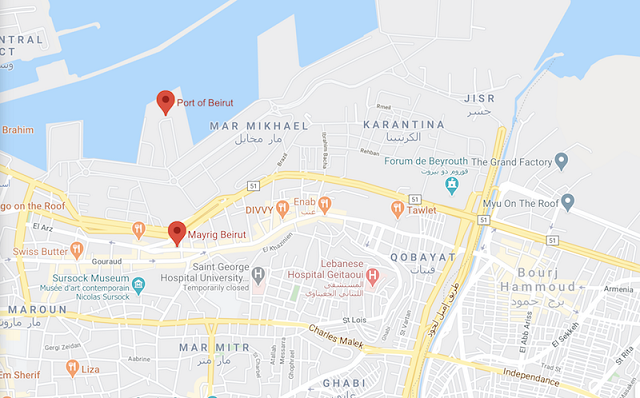
Located at 282 Pasteur Street, the only thing separating the Port of Beirut from Mayrig is the Charles Helou Highway
Kamakian went out on the terrace to take photos, made a call to the fire department, and then continued filming.
33 seconds later, the massive explosion tore through the city.
She immediately crouched down in a fetal position to protect herself, and felt an extremely hot blast of wind blow over her, she said.
When Kamakian stood up, there was blood everywhere. What followed was a series of harrowing events: her giving a very badly injured colleague CPR, removing his shirt with a shard of glass because she couldn’t find a knife or scissors, and carrying him strapped to a broken door down three flights of stairs with other members of her team.
When they finally got to the first floor, there was more blood, screaming, dust, and absolute destruction.
“It took 3 seconds to destroy everything,” she tells me on a phone call from Beirut. “My offices, the restaurants, my house, my car. Everything, everything was gone.”
Ramy Nehme, Mayrig’s Executive Director, was with Kamakian.
After the blast, he called out for Aline, and she answered, but they both couldn’t hear well. They only realized later that they had each lost hearing in one ear, as well as suffered broken bones.
“We had the facade of the fourth and fifth floor fall upon us,” he said. “There was blood everywhere and papers everywhere. Blood and papers everywhere.”
With Kamakian, he helped carry his colleague Julien down to the first floor who was in need of serious medical attention. When they got to the restaurant, it was in a state of chaos.
“It was surreal, going into the restaurant – these are my friends, these are people I spend more time with than my parents, seeing them like this, I just looked at them and not one employee was intact, everyone was bleeding,” Nehme said.
Hagop Bedikian, chief operations manager at FIG Holding Co (Mayrig’s parent company) was trapped under cabinets on the third floor, along with Nehme and Kamakian. He could see he was bleeding profusely too, but couldn’t determine from where. Unsure of what had just taken place, he managed to get up, go downstairs, and attempted to find his car so he could get his colleagues to the hospital, which was totaled.
“That’s when I realized the entire district was completely destroyed. There was no way to receive any help, no way for an ambulance to reach us,” he said.
The only choice left was to walk. He began to make his way to a nearby hospital with two other Mayrig employees who were badly injured.
“We need to walk and reach the hospital because it’s the only way we can save our lives,” he told them.
But the hospital was destroyed, too.
After trying two more hospitals where they could not receive help, a car passing by took Bedikian’s colleagues to an emergency room further away.
Bedikian walked another mile and called a friend, who picked him up on a motorcycle, the only mode of transportation that could navigate the rubble all over the city. They eventually reached a hospital in the mountains near Beirut. After 5 hours, he received stitches in his face and neck, as well as care for a broken left hand.
Many of the deepest injuries suffered by residents of Beirut aren’t visible, however.
“Everyone is in shock, psychologically, they’re all affected,” he told me by phone in Beirut. “Still we cannot understand what really happened. It was very fast, huge, something that you can only see in movies.”
***
The first time Aline Kamakian cried after the explosion was when she witnessed her staff receiving food from Caritas, a Catholic organization providing on the ground relief, at the end of a cleaning day where debris from the blast was removed.
We have a restaurant, she thought, but we don’t have food.
Mayrig had distributed meals before – during Lebanon’s Cedar Revolution in 2005, as well as with the ongoing global Covid-19 crisis, and the sight of her restaurant staff needing to look elsewhere for food spurred her to start cooking again.
The first day, 200 meals were distributed. The second day, 500.
Soon, they were discovered by Chef José Andre’s and his non-profit, World Central Kitchen (WCK), which provides meals in the aftermath of natural disasters across the globe.
“I needed help, we are in a crisis, a financial crisis, everything is cash and no supplier will give you anything, so this is where we started,” Kamakian said.
Now, they’re working with a volunteer crew to provide 2,600 meals a day, feeding hot meals like fassoulia with rice to anyone who comes their way.
Cooking, Kamakian said, is the best thing they’ve done in the wake of the disaster, a way for them to heal.
“We’re doing therapy through food, by cooking for others,” she said. “We need to continue, we need to rebuild, we need to do this.”
***
Mayrig might be located in Beirut, but their fanbase is truly international.
“Our heritage in food is really something,” Bedikian said. “We have a lot of reservations from Europeans even before they arrive to Lebanon.”
Syrian-American rapper and poet Omar Offendum visited Mayrig on every trip he made to Beirut to see family. When his mother lived in Damascus, they’d drive over to Beirut, only a 2 hour trip, to see her extended family who lived in the city. He vividly remembers their time at Mayrig together, where they indulged in the sour cherry kebab and bourek.
“For me, the clincher was the ice cream trio – halawa, karawia (caraway) and rose,” he said.
Though he never really messed with kibbeh nayeh, which is a Middle Eastern dish made of raw meat, he had Mayrig’s version (called tchi keufte in Armenian), and enjoyed it.
“I just lathered it with garlic sauce and went to town,” he said. “It’s a place I went and I hope to go again.”
Keith David Watenpaugh, professor and founding director of Human Rights Studies at the University of California, Davis, first visited Mayrig in the Spring of 2014 on the insistence of his wife Heghnar Zeitlian Watenpaugh, who was born in Beirut, and is a professor of art history at Davis.
He ordered items like “itch,” cooked bulghur with tomato and sun-dried pepper taste and various kofte, where “you can see the marks of the chef’s fingers on the finished product,” and spoke to wait staff, many of them young well-educated Syrian refugee men, he says, who would reminisce with him about the food in Aleppo.
Since then, he’s been back on every visit, often using Mayrig as a way to introduce Lebanon to travel partners, he said.
Why is Mayrig so special? I ask.
“Here is this great restaurant, where Armenian soul food is given pride of place near the Armenian ghetto of Burj Hammoud which emerged from a refugee camp built of abandoned oil drums and scrap wood a hundred years ago,” he writes back.
Indeed, Mayrig is special because it’s the continued manifestation – through food – of a people who have fought to survive, refusing to disappear into the ethers of history.
***
With billions of dollars in property damage, growing anger at government incompetence and corruption, and political resignations, it’s difficult to assess what the future holds for Beirut, and along with it Mayrig.
Protests following the explosion took place, and Nehme, despite being injured, attended, where police fired tear gas and rubber bullets into the crowds.
“People died. I held my friends corpses. There is real pain. If you can’t get angry over this pain, what is going to make you angry?” he said.
Nehme’s sentiments are palpable, and echoed by many young Lebanese, caught between dueling emotions of hope and absolute despair. Many are thinking of leaving, and others don’t want to surrender Beirut to “crooks and thieves,” as one resident told CNN.
For the restaurant, the focus right now is making sure employees have housing, as well as repairing the kitchen.
Kamakian said she knows that Mayrig will exist again.
“One thing is for sure, whether I want it or not, it’s going to be rebuilt.”
Mayrig’s crowdfunding campaign has raised just over $58,000 at the time of publishing, but their road to re-opening is long and will require assistance along the way.
It’s unclear how much time repairing both houses and hearts will take, but Kamakian’s hope is that the city will see better days.
“I wish this can unite people as if we are united through food on a plate,” she said. “Bottom line, all of us are the same, we need food and we need love to sustain.”
You can contribute to Mayrig’s crowdfunding campaign here
Dining in Diaspora is a project documenting the complex legacy of Armenian food in the diaspora. Follow on Instagram and Facebook





















































